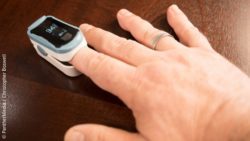Medical electronics: technology that shapes lives
These three central components are the heart behind high-tech therapies
In short: Medical electronics overview

12.06.2025
1. Sensor technology
2. Microelectronics
Products and exhibitors on this topic
3. Signal processing and integrated circuits

Clean room testing ensures the quality of the sensor and chip function for critical therapies.

The small electronic modules that measure and process vital data and control therapy steps are produced in precision assembly.
Cost-benefit quick facts of medical electronics
Technology
Cost factors
Benefits/advantages
Note on profitability
Sensor technology
MEMS design, calibration, manufacturing tolerances, clean rooms, materials (silicon, biocompatible surfaces)
Precise real-time measurements, compact sensor integration, improved monitoring
Costs fall with high volumes - crucial in wearables and intensive monitoring
Microelectronics
Semiconductor manufacturing (CMOS lithography, masks), ASIC development, test & certification
High integration, low energy consumption, minimal size
High initial investment, amortizes with large series (e.g. implants, monitors)
Signal processing
License fees for DSP/FPGA-IP, development costs for algorithms, hardware costs
Real-time analysis, reduction of data volume, intelligent functions (e.g. arrhythmia detection)
Savings in storage and cloud costs, better therapy results justify additional expenditure
Outlook: Networking and intelligent systems
More articles on this topic from the COMPAMED-tradefair.com editorial team:
The products where medical electronics are used are available at MEDICA:




